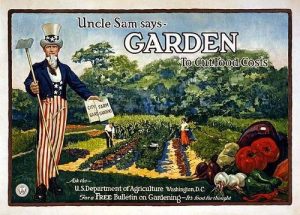Stephen Cantu is a Master Gardener with the Master Gardener Association of San Diego County. Confined to a wheelchair 37 years ago by a job-site accident, he became a Paralympian and noticed that accessibility issues often exist even when organizations and events try to focus on mobility challenges.
He developed a program he calls FIG – Friendly, Inclusive Gardens. In interviews with The San Diego Union Tribune and the University of California, he talks about his idea of a cradle-to-grave garden that can be accessed by everyone from toddlers to great-grandparents.
According to Cantu, “Start out with a small kitchen garden of mostly herbs, something that is in small containers that you can grow next to your kitchen. Start simply and don’t buy anything until you have an understanding of your needs. For a small garden, all you really need are your hands, a pair of gloves, some soil, and a few herbs.”
In addition to herbs, according to “Central Sierra Vegetable Planting Dates” in April (below 2500 feet elevation) you can plant asparagus, beans, potatoes, radishes, beets, carrots, celery and Swiss chard. If you live above 2500 feet, you can try beets, broccoli and cabbage, and various kinds of lettuce. Everyone can try planting peas and lettuce, but temperatures will start warming from now on and your plants may suffer or not produce.
Did you know that you don’t always need to purchase seeds or started plants in order to produce new garden crops? If you are trying to prevent boredom in your stay-at-home children, try planting parts of vegetables that you already have in your refrigerator or cupboard. The root end of a clump of celery or the top of a carrot (where the leaves attach) can be cut and planted in soil. It will produce new celery stalks above ground or a new carrot below ground. Or try the seed from an avocado, suspended on toothpicks with part of the seed touching water in a small glass. Or bury the entire seed in a pot of soil. If you still have a pumpkin leftover from Halloween, try planting some of the seeds. A potato can be cut into sections and planted in the ground as an experiment to see what will grow.
An excellent source of gardening information is The California Garden website here. With the Master Gardener motto of “Advice to Grow By … Ask Us!” it offers a wealth of information on everything from drought to poisonous plants, flowers to vegetables and an alphabetized glossary of garden terms.
And, of course, don’t forget the Integrated Pest Management page at It will help you deal with all those insects that will soon be swarming to the new, succulent growth provided by our recent precipitation and warming April temperatures.
Happy Gardening!
Rebecca Miller-Cripps is a University of California Cooperative Extension Master Gardener of Tuolumne County who is currently growing chives, garlic chives, green onions and arugula. Gardeners from Tuolumne and Calaveras Counties can answer home gardening questions, call 209-533-5912 Fill out our easy-to-use problem questionnaire here. Check out our website here, You can also find us on Facebook.

